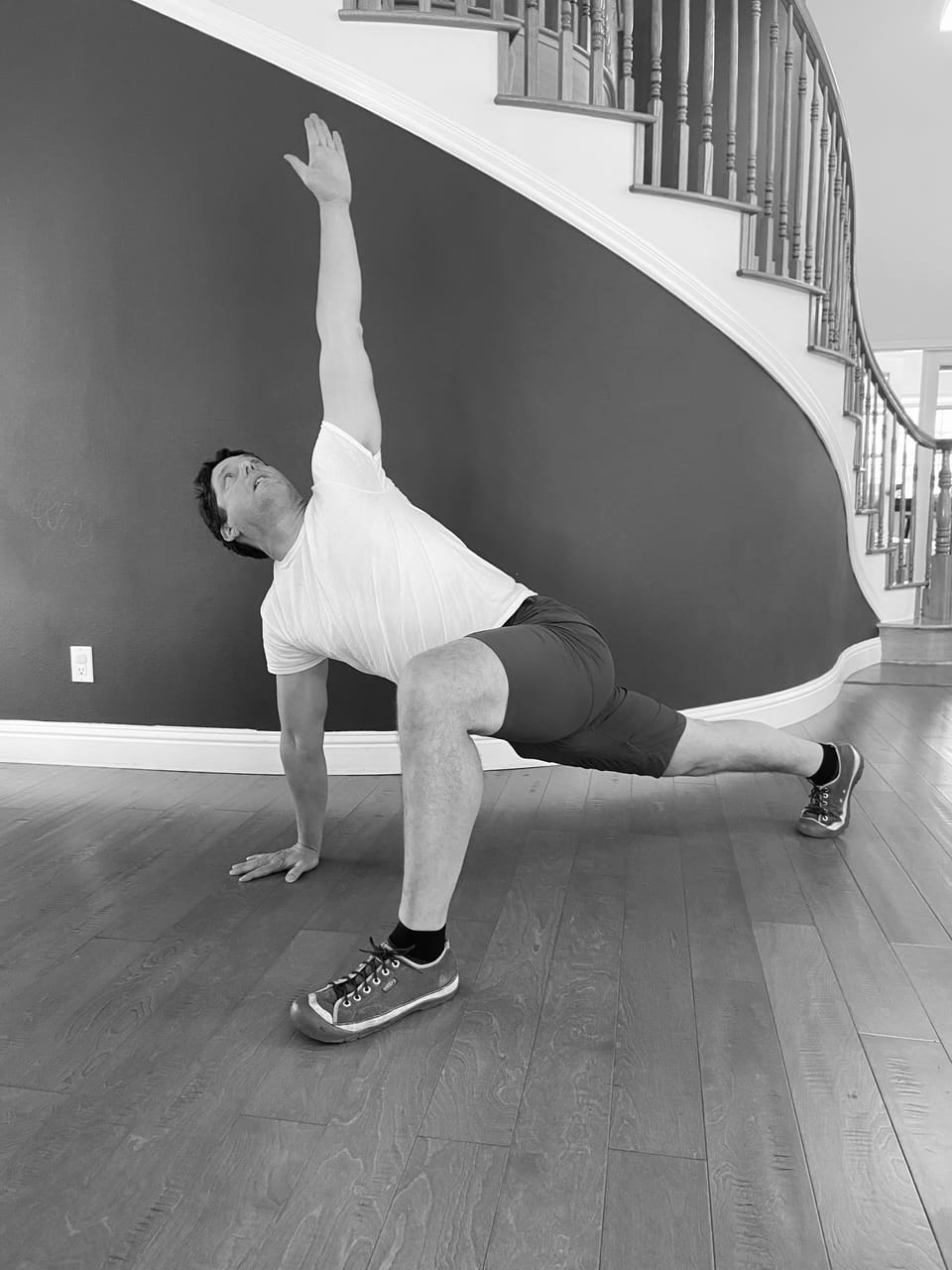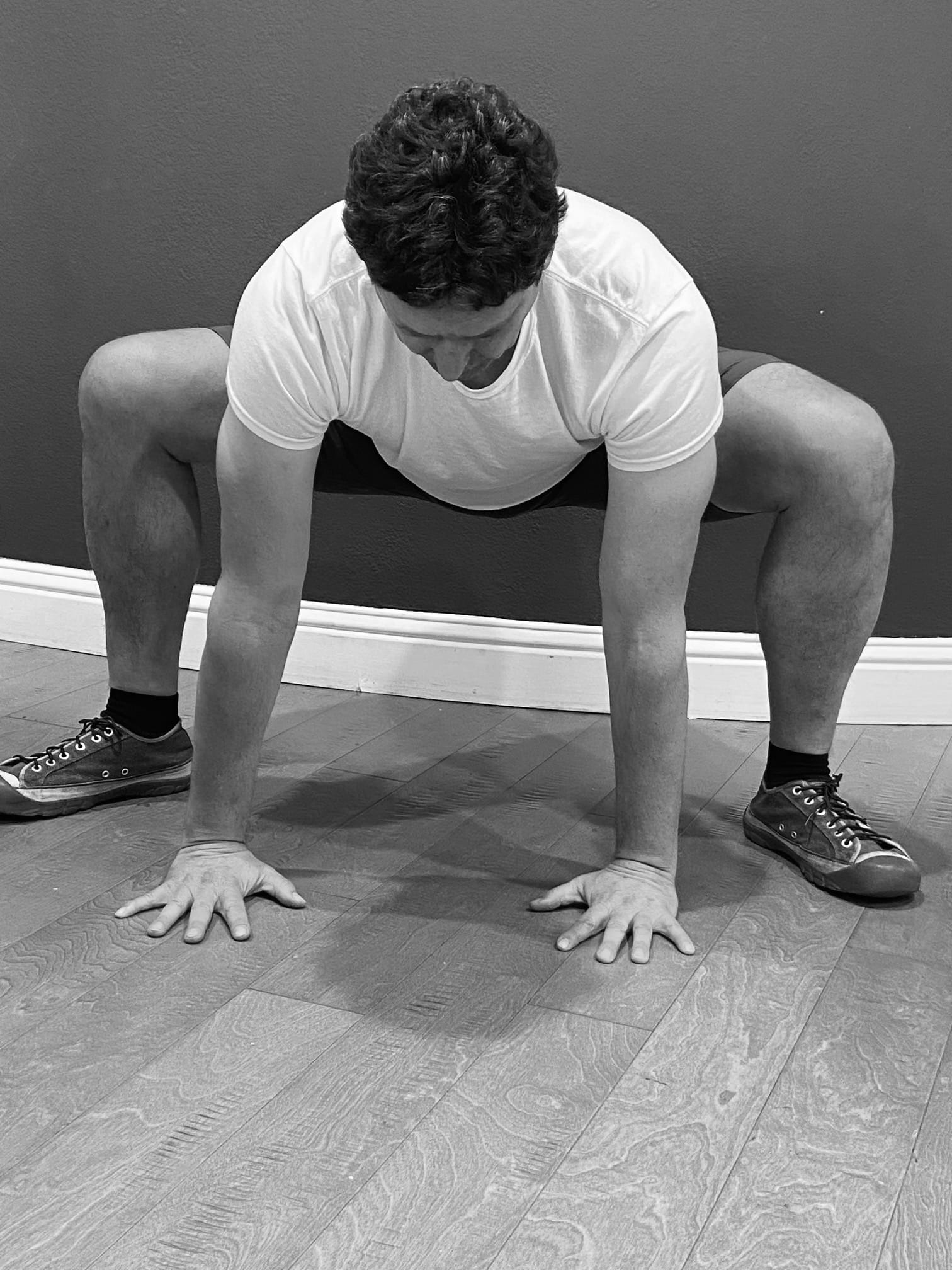Why you should be doing the "Harris Triples."

I'm very wary of reading (or writing) articles that lead with "The Three Exercises You Should Do To ..." (fill in the blank.) Usually get "shredded," "lose xxx pounds" or get a "rock hard six-pack."
There's a simple reason I avoid cliched articles like this: they don't work. It's snake oil B.S. Fitness is hard. It involves time and commitment. And gains come slowly and incrementally. That's why most people struggle to stay in shape.
With that caveat in mind, however; some exercises (or movements) are better than others. Perhaps a better way to phrase it is that they're more efficient. Your workout should focus on maximizing the number of muscle groups involved for optimum functionality. For example, going to a gym and using a bicep curl machine is a very ineffective way to exercise. Not only doesn't it mimic the way we move in everyday life (where a variety of muscle groups are engaged), it also wastes precious time that could've been allocated to more effective movements. If you only have a limited amount of time to work out, you’ll maximize your success by focusing on compound exercises.
Compound exercises are exercises that work multiple muscle groups at the same time. For example, a squat with dumbbell curls is a compound exercise that works muscles including the glutes, hamstrings, quads, deltoids, and biceps.
There are a myriad of benefits to doing compound exercises, including:
- improving strength
- improving flexibility
- burning more calories
- improving balance and coordination
One of my favorite compound movements is called the "Harris Triples." The exercise is named after one of my long-term clients who has an almost mythical reputation. At 73, Michael is among the fittest of the people I've trained. He looks vaguely like the "Most Interesting Man in the World" of Dos Equis fame....except with a six-pack and a lot more muscles.
Years ago, when another client was running behind schedule and wanted a quick workout at another time, I told him he could workout that evening with Michael. My client paused for a second and considered the implications of the invitation.
"Grandfather Heat?" he said. "No thanks. I think I'll pass."
However, similar to another person of mythical proportions, Michael has an Achilles Heel: his flexibility. Although his flexibility has improved dramatically over the years, it still takes him a good bit of time to get warmed up and limber. When I started incorporating a version of the "Harris Triples" as a warm-up exercise, Michael asked if we could do two more sets before commencing the actual work-out. And so, the "Harris Triples" was born.
There are two components to the movement. And if you want the advanced version (with a push-up added), then there are three.
To start, get yourself in a standard push-up position, with hands shoulder length apart and feet wide. Move one foot forward and place it on the ground with your knee bent at 90 degrees. Now take the arm closest to the forward foot and bring your elbow in a bent position down to the ground on the inside of the foot. The movement looks like the picture below:

Note how my back (supporting) leg is straight. Only go as far down as your flexibility or discomfort level will allow while keeping the anchor leg straight. Hold for a five second count. This movement works muscle groups including the ab complex and the adductors (the groin muscles).
The next step is to raise the arm that was bent toward your knee and raise it straight into the air while trying to keep both arms aligned with each other. This movement can be seen in the first picture above the text. Aim for a five second hold again. Repeat both movements on each side. Now, you're incorporating more of the ab complex, in addition to the lats and serrati (side muscles) and the deltoids (shoulder complex).
Next, after going back to a neutral push-up position, spring forward with both legs and go into a deep squat by placing both palms on the ground and lowering your butt. Place your feet wide. (If you have balky knees, simply step forward into the squat) The squat should look like this:

Hold for a ten second count. The muscle groups worked include the adductors, hip flexors, quads, hamstrings, and glutes; many of which are shortened and underutilized by extended periods of sitting. After leaping (or walking) back to a neutral position, complete two more sets.
For the advanced version: add in some push-ups. Arms and feet wide. Make sure to go all the way down and hold for a two second count to make the push-up more effective. Aim for 5-10 reps each set, or however many you can do with good form.
I've been using this warm-up for a long time with my clients. It's a highly effective way to improve flexibility and strength (with the push-ups added in). No promises for miracle fat-blasts or gargantuan muscles. But for people who are pressed for time, and want an exercise that adds functional fitness into their routine, you'd be hard pressed to find a more complete movement.
Joshua Brandt is an Oakland based personal trainer.
He can be reached at joshua@joshuabrandtpt.com or (415) 412-7339.
Initial consultation and session is free.
Member discussion